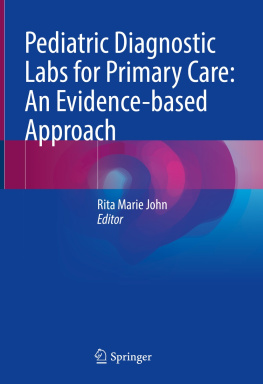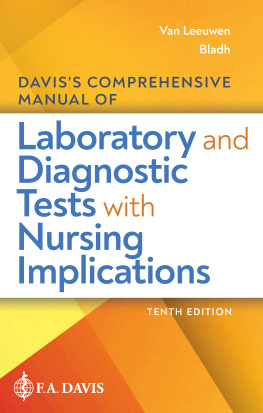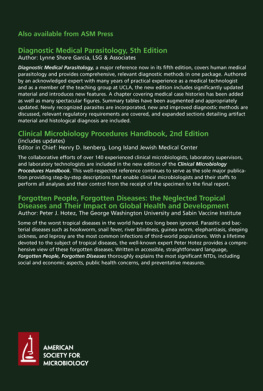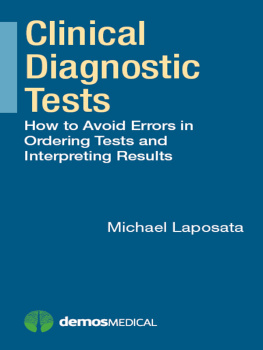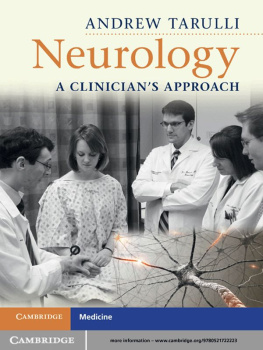Editor
Rita Marie John
School of Nursing, Columbia University, New York, NY, USA
ISBN 978-3-030-90641-2 e-ISBN 978-3-030-90642-9
https://doi.org/10.1007/978-3-030-90642-9
The Editor(s) (if applicable) and The Author(s), under exclusive license to Springer Nature Switzerland AG 2022
This work is subject to copyright. All rights are solely and exclusively licensed by the Publisher, whether the whole or part of the material is concerned, specifically the rights of translation, reprinting, reuse of illustrations, recitation, broadcasting, reproduction on microfilms or in any other physical way, and transmission or information storage and retrieval, electronic adaptation, computer software, or by similar or dissimilar methodology now known or hereafter developed.
The use of general descriptive names, registered names, trademarks, service marks, etc. in this publication does not imply, even in the absence of a specific statement, that such names are exempt from the relevant protective laws and regulations and therefore free for general use.
The publisher, the authors and the editors are safe to assume that the advice and information in this book are believed to be true and accurate at the date of publication. Neither the publisher nor the authors or the editors give a warranty, expressed or implied, with respect to the material contained herein or for any errors or omissions that may have been made. The publisher remains neutral with regard to jurisdictional claims in published maps and institutional affiliations.
This Springer imprint is published by the registered company Springer Nature Switzerland AG
The registered company address is: Gewerbestrasse 11, 6330 Cham, Switzerland
Foreword
This book is written for primary care providers who care for children. The book will meet the need of primary care providers to increase their knowledge of diagnostic labs and how to interpret them. While guidelines have been developed to guide clinicians in ordering diagnostic laboratory tests during a well-child visit, the interpretation of diagnostic labs must be organized. The clinician seeing patients who present with various complaints cannot order tests in a disorganized way. The clinician must rule out the worst-case scenarios and consider which diagnostic laboratory tests will provide the best information to determine the diagnosis.
The ordering of diagnostic laboratory tests and their interpretation was not well taught when I became a nurse practitioner in the late 1970s. Today, many programs have limited time to teach all the different tests and interpret them. This book will fill in that gap and update clinicians who were trained several years ago.
Diagnostic laboratory stewardship involves using the right test for the right patient at the right time (Morjaria & Chapin 2020). The tendency to overutilize diagnostic tests has been well documented in multiple studies, with an estimate that one out of five lab tests is unnecessary (Zhi et al. 2013). Clinicians must understand which test will answer their diagnostic questions. It is important to note that 60% to 70% of medical decisions are based on diagnostic laboratory results (Molinaro et al. 2012). Therefore, understanding the limitation of tests is critical to the proper diagnosis.
Parents have access to diagnostic laboratory tests and get very concerned when they see a result flagged with high and low, even when the result is only .1 over or under the normal value. Carefully explaining the interpretation of the result is key to alleviating anxiety and increasing understanding of the result. Ordering more tests when the results are not significant can lead to over-ordering of diagnostic laboratory tests. The clinician must be able to completely understand the results to explain the results to concerned families.
The format of each chapter is designed to address common presenting complaints in the primary care office. The organization is designed so that the laboratory tests follow an explanation of a variety of diagnoses. The book has 12 chapters, and chapters are divided by systems. Each of the authors has clinical experience in their section and gives insight into the differential diagnosis and the clinical guidelines if the guidelines are available.
The book's first chapter reviews how to interpret laboratory tests and hopefully increases the reader's understanding of what false-negative or false-positive results mean. The molecular panels can be very helpful in diagnosing infectious diseases. Still, the clinician must understand that ordering diagnostic laboratory tests with a low pretest likelihood may cause diagnostic errors. Baird (2019) pointed out that a low pretest likelihood may increase diagnostic mistakes. Newer and more accurate tests have led to a greater ability to diagnose, but not with absolute certainty (Bindraban et al. 2018). Lippi et al. reported that the rate of inappropriate laboratory tests ranges from 23% to 67%. Therefore, understanding pre- and post-test probability will improve the clinician's diagnostic accuracy.
Chapter reviews the care of pregnant adolescents. Frequently, the primary care provider makes the diagnosis of intrauterine pregnancy. The problems of getting the adolescent involved with proper obstetrical care can depend on insurance and local availability. This chapter gives an insight into the management of pregnant adolescents.
Chapter discusses point-of-care (POC) testing. This chapter includes information on COVID testing as well as several common POC tests. POC is a rapidly expanding area, and clinicians must be aware of the availability of point-of-care testing so that patient treatment can be expedited.
Chapter discusses pediatric infectious diseases and the variety of available laboratory tests. Children frequently present to the office with a fever, and a knowledge of infectious diseases diagnostic testing can help pinpoint the child's diagnosis. The limitations and pitfalls of the variety of tests are reviewed to aid the clinician in understanding the results.
Clinicians today have the advantage of genetic diagnostic tests to aid them in determining the cause for the presenting complaint. Many clinicians were trained before the advent of the broad variety of diagnostic genetic tests. The diagnostic potential of the newer technology of genetic tests in pediatric patients allows early timely and specific interventions to improve clinical outcomes. Understanding the limitation of these tests can be very helpful.
Chapter review these systems. The reader can improve their knowledge of a variety of laboratory tests.
I hope that the reader will review each chapter utilizing the cases to reinforce the readers. There are boxes of key learning throughout each chapter to reinforce the reader's knowledge. There are several questions with rationales at the end of each chapter for review.

